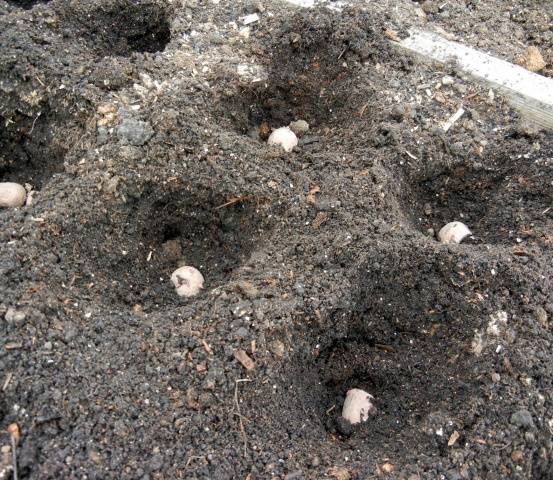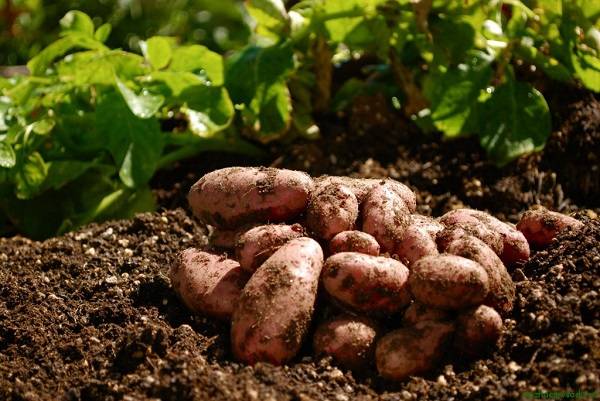Content
To obtain an early potato harvest, it is necessary to select early-ripening, productive varieties. Since today the range of potato varieties and hybrids is quite wide, not every gardener can make the right choice. An accurate description of the plant with detailed characteristics and growing habits will be required. One of the interesting varieties of potatoes is Baron.
Origin story
The Baron potato variety was created by Russian scientists at the Ural Research Institute of Agriculture. This early ripening The table plant was included in the State Register of Plant Growing in the Russian Federation in 2006. Recommended for growing in private gardens and on an industrial scale.
Description
Potato Baron is one of the best domestic varieties of early ripening. Fully ripened potatoes are harvested 60-70 days after germination. Young potatoes can be dug up after 45 days. It is not liquid, but the skin is thin and easy to peel.
Bushes
Potatoes of the Baron variety stand out for their height and power. Bushes of leaf type, semi-erect. Leaves are deep green and medium in size. Flower corollas are medium-sized, red-violet. The shoots appear together. The plants develop well, so the tops close quickly.
Tubers
Tubers of the Baron variety are oval-round, large. Potato size varies between 110-195 grams. The eyes are reddish and located at medium depth. The thick yellow skin provides reliable protection against damage.
The light cream flesh does not change during cooking. Tubers contain a large amount of ascorbic acid and few carotenoids. Starch content is within 14%.
Potato Baron has excellent taste, which confirms its popularity:
- moderately crumbly;
- does not darken at the end of cooking;
- Suitable for making soups, purees, French fries.
Advantages and disadvantages
The Baron potato variety can be grown in any climatic conditions, since it quickly acclimatizes and easily tolerates temperature changes. Gardeners note the following advantages:
- High yield: from 11 to 23 c/ha, and if all agrotechnical standards are observed, about 37 c/ha. Up to 10-12 large potatoes are formed in one bush.
- Commodity content up to 96%, shelf life up to 95%.
- It gives a good harvest both in drought and in high humidity.
- The variety is resistant to potato blight and is weakly affected by golden potato cyst nematode.
- Tubers are practically not affected by late blight.
- Thanks to the dense peel, you can harvest the crop using a combine and wash the potatoes before storing them.
If we talk about the disadvantages of the variety, it should be noted:
- susceptibility of tops to late blight;
- damage to plants by common scab when grown on an industrial scale.
Landing
Baron potatoes can be planted on any soil. The plant does well in elevated, well-lit areas. The best predecessors are cabbage and root vegetables.Vegetables are planted in one place for no more than two years. It is not recommended to use areas where other nightshade crops were grown.
Medium tubers are selected for planting. Experienced gardeners focus on the size of a chicken egg. Potatoes must be germinated and treated against pests with special preparations. Three days before planting, they are heated in the sun so that the potatoes sprout faster and produce an early harvest.
About, how to germinate correctly and prepare potato tubers for planting, an experienced vegetable grower will tell you:
Before plowing or digging, ammonium nitrate (15-20 grams) or urea (10-15 grams) is scattered on each square meter. Organic lovers can use compost or rotted manure, wood ash. Tubers are planted a day after plowing so that the soil settles a little.
Potatoes of the Baron variety are planted at a depth of 15 cm with a step between holes of 30 cm, in row spacing of 45-50 cm for ease of processing. Early potatoes are planted in May. In some regions at the beginning, in others - towards the end of the month (climatic features are taken into account).
Care
Caring for the Baron potato variety is practically no different from standard measures:
- weeding;
- loosening;
- hilling;
- treatment against diseases and pests;
- in case of persistent drought - watering.
Before the emergence of seedlings, the area is harrowed. This is necessary to stimulate plant growth and remove weed. When the stems reach a height of 20-25 cm, the plantings are weeded and hilled. For better tuberization, the procedure can be repeated again.
Late blight is prevented before the first hilling of potatoes. Products such as Acrobat and Ridomil Gold work well on the Baron variety.
In areas where plantings suffer from the Colorado potato beetle, it is necessary to treat the potatoes with special preparations. As a rule, the descendants of this insect are very voracious and are capable of destroying the entire crop.
To prevent common scab, a potato field after digging can be sown with green manure: oilseed radish, mustard, phacelia. In spring, plant remains are simply plowed under. At the same time, the soil structure improves and plants get sick less.
Top dressing
When growing Baron potatoes, fertilizing is carried out twice. The first time when preparing the soil. The soil is fed with compost, humus or superphosphate, and potassium salt.
To improve plant growth, nitrogen-containing fertilizers are applied. After all, the more powerful the tops, the greater the harvest and the larger the potatoes. Nitrogen fertilizing is applied before the second hilling.
During the formation of buds, potatoes of the Baron variety are fed with dry wood ash before rain or watering.
Diseases and pests
The description of Ural seed growers notes the high resistance of the Baron potato variety to many viral and fungal diseases. This can be clearly seen in the table:
| Name | Points |
| Late blight of tubers | 6 |
| Leaf blight | 6 |
| Potato cancer | 9 |
| Ring rot | 5 |
| Rhizoctoniosis | 7 |
| Common scab | 7 |
| Potato nematode (RoI) | 7 |
You can understand how resistant a variety is to disease by the scores:
- strong susceptibility – 1-3 points;
- moderate susceptibility – 4-5 points;
- moderate stability – 6-7 points;
- good stability – 8-9 points.
As can be seen from the table, the Baron potato variety is resistant to fungal and viral diseases. To prevent common scab, bushes are sprayed with special means.
The main pest is the Colorado potato beetle. Before planting, the tubers are treated with Prestige. Beetle larvae are removed from potatoes by hand. Mole crickets and wireworms harm plants. Traps are used to control these pests.
Harvesting
The main harvest of the Baron variety is harvested two to two and a half months after emergence. A week before digging, it is recommended to mow the potato tops so that nutrients flow to the tubers.
At home, they dig up the bushes with a pitchfork and select potatoes. Farmers can use combine harvesters. Cleaning is done in dry, sunny weather.
The harvested potatoes are left in the sun for 2-3 hours so that the soil flies off and the tubers dry. Then the vegetables are put into a dark room with good ventilation. Tubers are sorted after 10 days. Small and planting potatoes are immediately selected. It is put into different compartments of the basement for storage.
Conclusion
Potato Baron is especially popular among Russians for its ease of care and resistance to many diseases. But the main thing is taste. At first, potatoes were recommended for cultivation in the Volga-Vyatka region, but over time they conquered almost all Russian regions. And it works great everywhere.
















I planted the baron with seedlings (5 tubers) at the beginning of May. At the end of June I harvested it. I planted it with tubers (pre-sprouted) I'm waiting for the second harvest Yekaterinburg